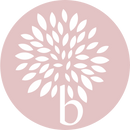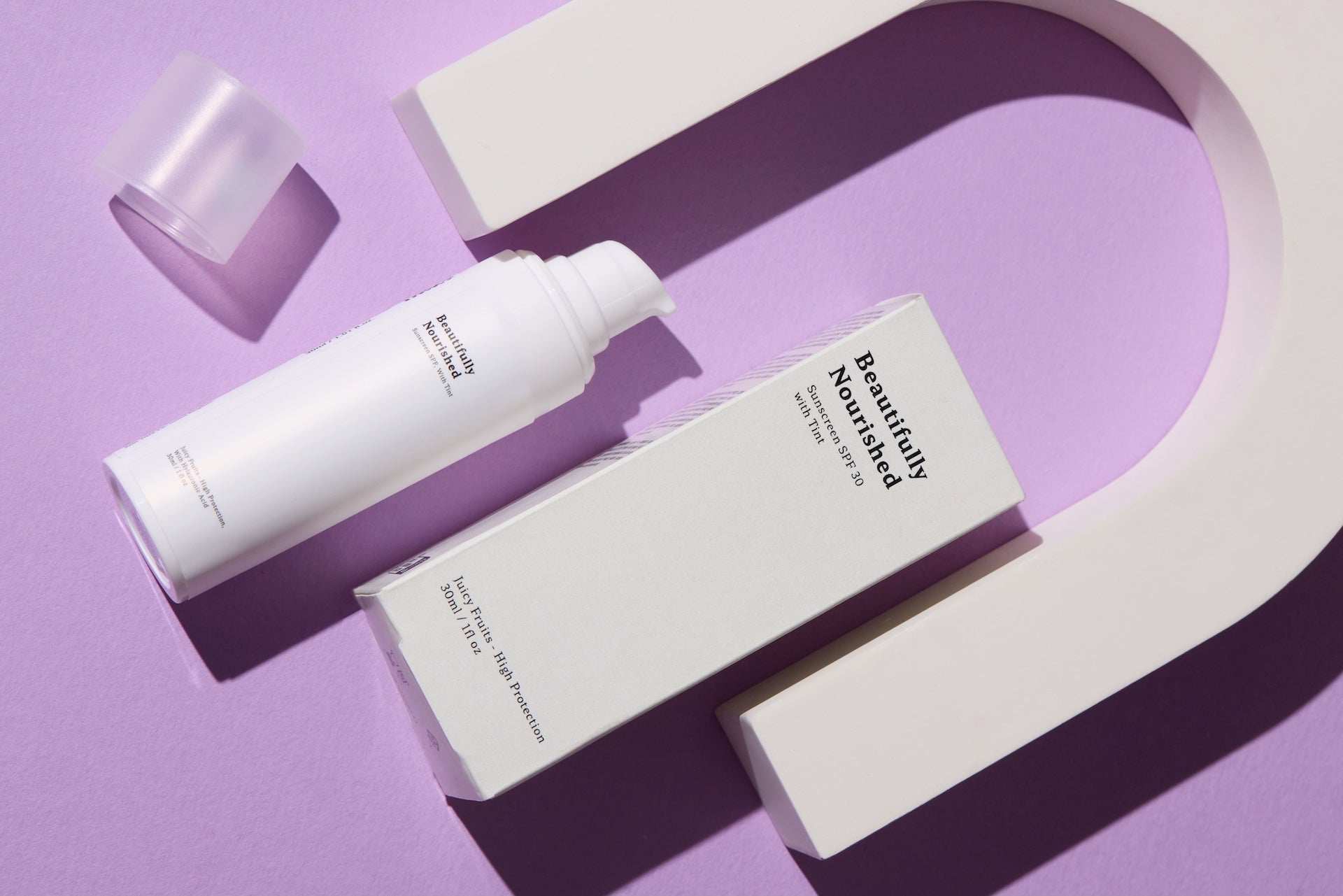Understanding the Hormone–Skin Connection
Our skin responds directly to fluctuations in oestrogen, progesterone, and testosterone across our menstrual cycles. These hormones affect collagen synthesis, oil (sebum) production, hydration, elasticity, and even how quickly our skin heals.
By understanding these internal shifts, we can adjust our skincare and nutrition care at the right times, helping to minimise inflammation, prevent breakouts, and maintain a stable, healthy complexion.
Each month, our skin moves through its own unique cycle and this cycle is very nuanced to each woman — one that mirrors the rise and fall of her hormones at her specific times (which can very much be affected by her environment, the people around her, stress levels, nutrient intake and sleep times).
Today we would like to offer a guide that you can use to better understand what may be happening internally and to your skin's needs in each phase of your cycle, so that you may nurture it more intentionally - supporting balance, clarity, and long-term vitality.
Menstrual Phase (Days 1–5): Hormone Levels Low, Lower Barrier Function
When your period begins, both oestrogen and progesterone reach their lowest levels.
This hormonal dip can weaken the skin barrier, reduce sebum production, and increase transepidermal water loss — leaving skin drier, more sensitive, and prone to redness or dullness.
What to focus on:
- Barrier repair: Use gentle, fragrance-free cleansers and occlusive moisturisers (that lock in moisture and prevent water loss) containing ceramides, squalane, or hyaluronic acid.
- Nutrient intake: Replenish iron and magnesium with foods such as lentils, spinach, and pumpkin seeds. Iron and magnesium help replenish what’s lost during bleeding, while hydration aids detoxification.
- Inflammation support and support from within: Herbal teas (ginger, chamomile) and hydration help reduce inflammation and fluid retention. Think herbal teas, coconut water, and foods high in natural electrolytes.
This is a restorative phase where recovery and protection are key.
The skin’s barrier may feel delicate, dry, or more prone to redness. This is a time for comfort and restoration — inside and out.
What your skin needs:
- Gentle, non-stripping cleansers and replenishing moisturisers
- Warm, mineral-rich meals: leafy greens, beetroot, lentils, and nourishing soups
This is a time for rest and introspection.
Recommended Beautifully Nourished product for this stage: Nourishing Rich Night Cream
Avoid these products when skin is sensitive during period :
- Strong exfoliating acids – High-strength AHAs (like glycolic acid above 10%) or BHAs (like high-dose salicylic acid) can sting and worsen redness when your barrier is already compromised.
- Retinoids and retinol – These increase cell turnover and can amplify peeling or sensitivity; pause or reduce use during your bleed.
- Alcohol-heavy toners or astringents – These dehydrate the skin and can trigger tightness or flaking.
- Fragrance or essential oils – Common irritants that often cause stinging or inflammation in already reactive skin.
- Clay masks or harsh purifying masks – These can over-dry skin when oil production naturally decreases in the early menstrual phase.
- Scrubs with physical granules – Mechanical exfoliation may cause microtears and inflammation in sensitised skin.
-
High-foaming cleansers – Sulfate-based formulas strip the lipid barrier; use a low-foam, pH-balanced cleanser instead.
Follicular Phase: Oestrogen Rise and Increased collagen
Oestrogen begins to rise in the follicular phase, stimulating collagen and elastin production while improving skin hydration and thickness. Circulation also increases, enhancing nutrient and oxygen delivery to the skin.
What to focus on/ What Your skin Needs:
- Cell renewal: Introduce gentle exfoliation (lactic acid or enzyme-based) to support turnover.
- Antioxidants: Apply vitamin C or niacinamide to protect new collagen and brighten tone.
-
Diet: Prioritise phytoestrogen-rich foods such as flaxseeds, soy, and berries to support natural estrogen metabolism.
- Light exfoliation (AHA, lactic acid, or enzyme-based) to encourage cell renewal
- Vitamin C and antioxidant serums to boost brightness and protection
- A balanced diet rich in colour: berries, citrus fruits, lean protein, and seeds
This is an ideal time to strengthen the skin barrier and enhance resilience. As we move towards ovulation, the skin is prime for actives to work with the skin to revitalise the skin.
Recommended Beautifully Nourished products for this stage:
Vitamin ACE Moisturiser ( can be used everyday throughout cycle)
Natural Retinol Alternative Oil Serum
AHA Peeling for gentle exfoliation
As oestrogen rises, collagen and elastin production increase resulting in the skin often looking smoother, more even-toned, and more vibrant. This is your time to gently revitalise.
Support from within
This is the ideal time to introduce strength-building workouts, increase hydration, and focus on nutrient-dense foods. The body is naturally more resilient and energetic. You may have lots of energy at this point of your cycle, with creative bursts - great for passion projects, decision making and action.
Ovulatory Phase: Hormonal Peak and Sebum Activity
Skin is generally more tolerant now, so active ingredients can still be in place and reach their peak.
During ovulation, oestrogen peaks, and a small surge in testosterone boosts confidence and circulation. Skin often feels plump and radiant — though oil production can increase for some.
At this stage many experience a temporarily brighter complexion due to optimal circulation, but for some, the surge in oil production can trigger clogged pores or mild breakouts - Understanding the patterns of your own cycle is a beautiful practice.
What to focus on:
-
Oil balance:
Lightweight hydration and oil-balancing products such as niacinamide or zinc and clay masks to manage sebum.
- Deep cleansing: once or twice a week to keep pores clear. Use mild chemical exfoliants (salicylic acid, mandelic acid) to prevent congestion.
- Dietary support: Include anti-inflammatory omega-3 fats from salmon, walnuts, and chia seeds to help regulate oil production. Cooling, antioxidant-rich foods like cucumber, watermelon, spinach, and green tea will also serve you well.
Luteal Phase: Progesterone Dominance and Inflammation Risk
Following ovulation, progesterone becomes dominant. This hormone stimulates sebaceous glands, leading to thicker sebum and a higher likelihood of premenstrual, hormonal breakouts and premenstrual skin sensitivity. Water retention and inflammation can also make skin appear puffy or uneven. Energy levels dip. Consider witch high intensity hiit workouts to more gentle movements like yoga and pilates. Keep oxygen flowing with gentle walks or running if you run.
What to focus on:
- Calming care: Simplify your routine — avoid introducing new actives. fragrance-free cleansers, lightweight moisturisers, and soothing ingredients such as chamomile or green tea extract. Focus on barrier protection, using ingredients like centella asiatica, green tea, or bisabolol.
- Clay or sulphur-based masks once a week to draw out impurities gently
- Avoid over-exfoliation — focus on consistency instead
- Anti-inflammatory nutrition: Eat cruciferous vegetables (broccoli, kale, cabbage) to support liver detoxification of excess hormones.
- Craving management: Limit refined sugar and caffeine, which can elevate cortisol and worsen hormonal acne. Introduce dark chocolate and raspberries if cravings stike. Red raspberry leaf tea and dandelion teas are great for this stage.
Low oestrogen at the end of this phase can also contribute to dryness and sensitivity, so hydration remains essential.
Recommended Beautifully Nourished products for this stage:
Rich Night Cream - Soothing and Nourishing
Support from within
Cruciferous vegetables (broccoli, kale, cauliflower) help your body metabolise excess hormones. Reducing refined sugar, dairy, and caffeine can significantly improve hormonal balance and prevent congestion.
Include magnesium-rich foods (pumpkin seeds, dark chocolate, spinach) to ease tension and support restful sleep — both essential for skin repair.
A personal favourite recipe of mine for this stage is date balls -
Date Balls to Feed and Manage Cravings During Period
Ingredients - Medjool dates, organic dried apricots, flax seeds, chia seeds, 80& dark chocolate and dark chocolate chips.
1. Blend dates, dried apricots, flax seeds and chia.
2. Sprinkle in some dark chocolate chips.
3. Roll into balls and dip into melted dark chocolate.
4. Place in fridge until set!
Working With Your Body, Not Against It
Each menstrual phase presents predictable, unpredictable changes in the skin’s physiology. By bringing a more conscious awareness to your skincare and lifestyle choices with these shifts, you can reduce irritation, manage breakouts more effectively, and support long-term skin health.
Cycle-aware skincare recognises that your complexion is not static — it’s dynamic, reflecting your body’s hormonal intelligence. Nourishing your body with the right nutrients, managing stress, and maintaining hormonal stability are the foundations of consistent, healthy skin.
At Beautifully Nourished, we see women’s health and skin health as inseparable. When you understand your hormonal rhythms, you can work with your body — not against it — for clearer, calmer, and more resilient skin.
When you begin to honour your skin’s monthly cycle, you start to better understand our body's natural flow and signals. By aligning skincare, nutrition, and self-care with your natural cycle, you allow your complexion to achieve, maintain and reflect inner balance.
Supporting your hormones, nourishing your body, and calming your nervous system are the true foundations of lasting skin health.


